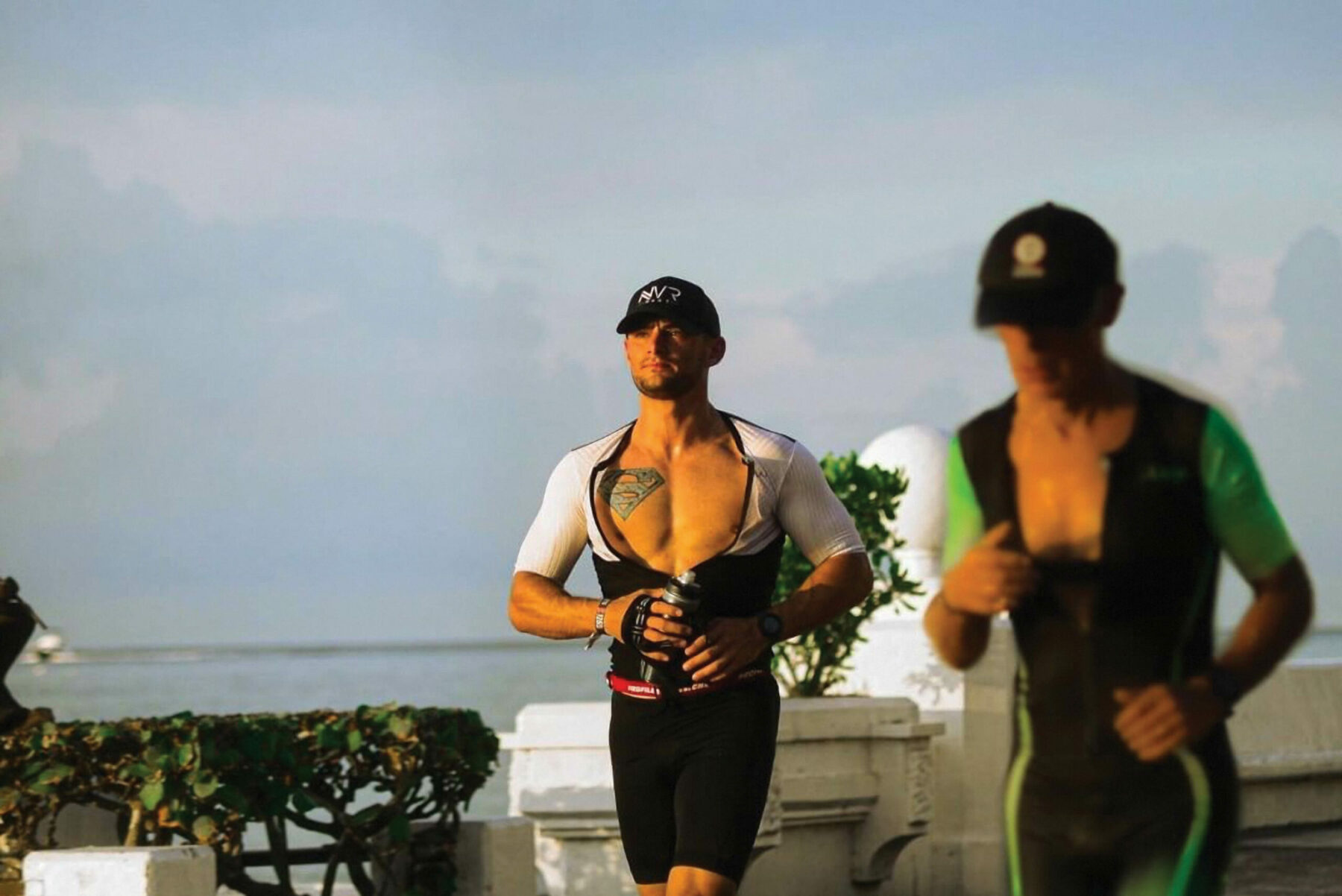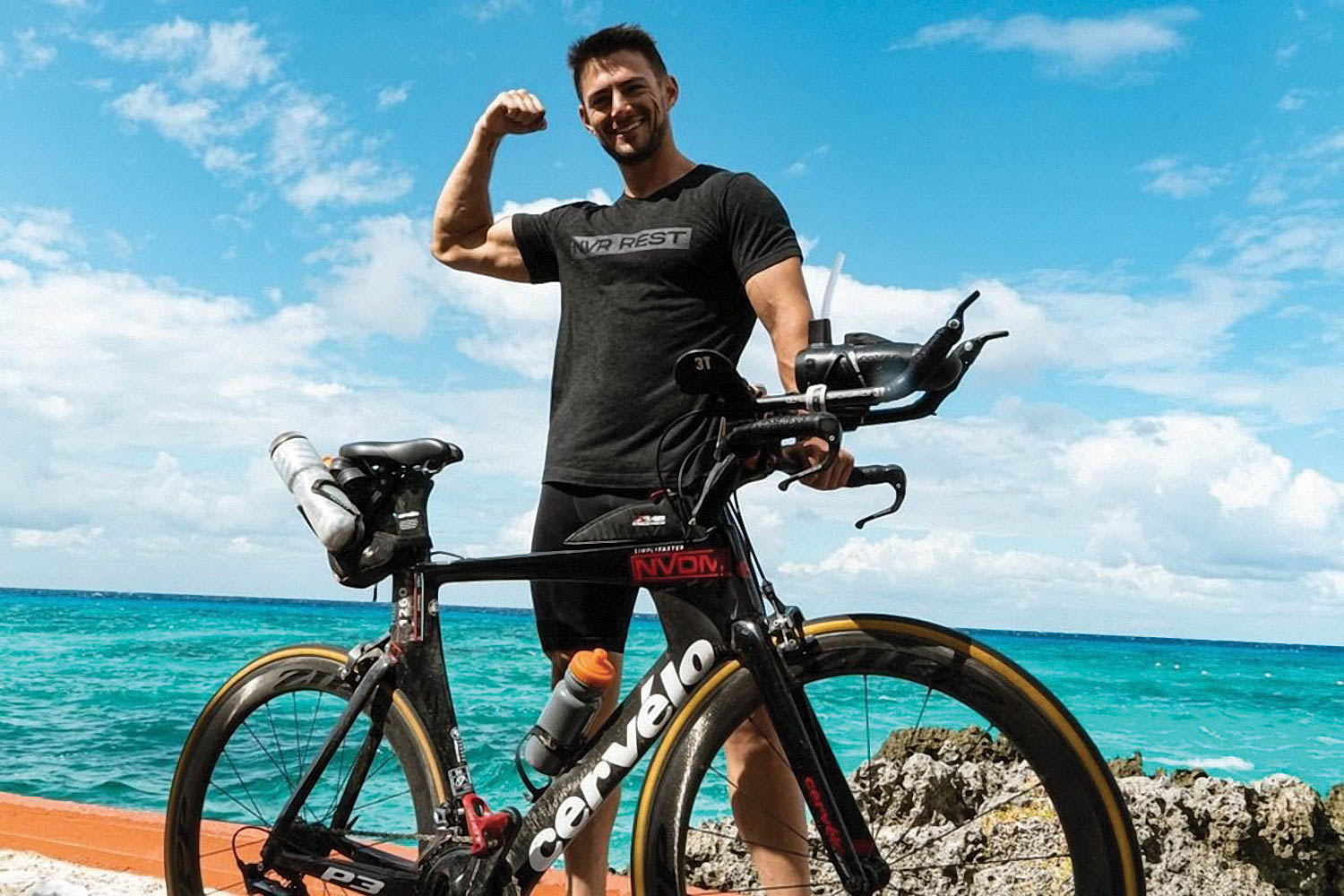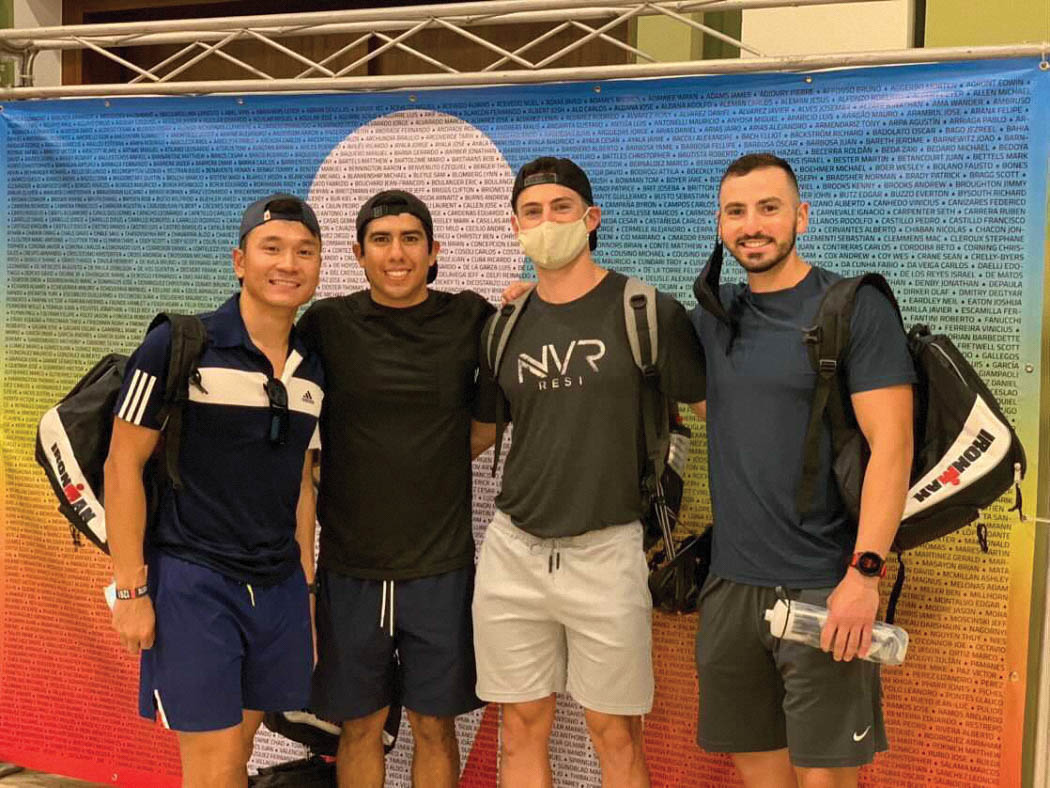Marathon Training Tips From an Ironman Triathlon Veteran

Running a marathon is a Herculean task alone. But you don’t simply step onto the starting line and go — you must train beforehand. As the saying goes, in order to run, you must first walk.
Devin Lofland, who competed in an Ironman Triathlon in November of 2021, weighs in on his experience and what he learned.
“The biggest piece of advice is don’t compare yourself to other people because it doesn’t help,” Lofland says. “If you allow yourself to accept that you have to start wherever you are, then you can start! Patience is a big factor.”
Once you’ve decided to train for a marathon and found your starting place, now comes the real training.

Finding the Motivation
Training for a marathon is rigorous. It’s too often that people don’t place enough stakes on their training, find the act of running monotonous and eventually fizzle out. Getting creative in how you push yourself can be the deciding factor in whether or not you train until the marathon.
“I had to sign up for my race in order to prevent myself from having a way out,” Lofland says. “It’s important to have accountability.”
Lofland created ultimatums with friends, family and loved ones — things like if he fails to run that day, then he has to do the dishes for a week or buy lunch for everyone.
Another reason why signing up for the race early on is a good option is that it gives you a goal to work toward. Lofland warns to not make the goal too far-fetched.
“Setting something up that is three or six months out is more realistic than trying to run your first ever race in two weeks,” Lofland advises.
Reverse engineering your training regime can also be helpful. First, you need to gauge how much you can currently run in a session or weekly. Once you’ve figured out your capacity, compare that to how much you’ll need to run in the marathon. Then, lower the number of miles weekly in increments until you reach your current daily limit. This should give you a rough estimate of how long your training regime looks. This also provides soft goals to hit weekly.
Getting Connected

Any burden can be lightened when shared with others. That’s why Lofland suggests you find a community or social circle to get involved with.
“I started working with a group here in Austin called the Austin Triathlon Club,” Lofland says.
Finding a running group or developing a circle of people who will push you to train is a game-changer. The people who Lofland has met through the Austin Triathlon Club have since become his source of accountability and also his running partners.
“Facebook is the best place to start, or visit your local shops,” Lofland says. “There are a ton of running shops here in Austin, and they are always welcoming. You just have to walk in and say hi.”
If visiting a shop in Austin seems like something you’d want to do, try checking out places like The Loop Running Supply, Rogue Running, Trek Bikes or Mellow Johnny’s. If you’re unable to visit shops in person, fret not. With access to social networks like Facebook and other apps like Strava and Whoop, the possibilities of finding a community are at your fingertips!
Get Expert Help
Don’t be afraid to seek out a professional — even the most talented of athletes get expert help.
“A couple of guys from the Austin Triathlon Club and I started working with a coach, and I’ve been an athlete my whole life,” Lofland says. “The greatest athletes in the world use coaches all the time.”
A coach can offer an outside perspective on how you’re training and possibly shed some insider tips on the world of marathon running. Good places to start looking for coaches in the Austin area can be Rogue Running, Coach Up or even Yelp!
Get Creative
Running can get boring quickly if it is always on a treadmill or the same route. Try mixing up your routine once in a while like running at night, in the morning or in new locations like Lady Bird Lake Trail, Shoal Creek Trail or the Barton Creek Greenbelt.
“At one point, I went to Galveston beach for a weekend and did a training session there,” Lofland says. “I’ll always remember going there, and it kept the training interesting.”
Check out this list from 365 Things Austin for more ideas on where to run in the Austin area.
Final Tips
Some final advice is to not only listen to others but also listen to yourself. When Lofland began his training for the Ironman, his heart rate was too high to run at the speed he wanted to.
“I had to accept things like being OK with running for miles and miles on a really slow pace and build my endurance,” Lofland says. “Listen to your knees. Listen to your hips. Listen to your heart rate. If you’re hurting or injured, back off a bit and just do what you can.”
Beyond that, have as much fun as possible, and enjoy the fresh air during the marathon!
“I like running,” Lofland says. “It keeps me focused, it keeps me driven and ultimately, it’s about seeing what you’re made of.”






